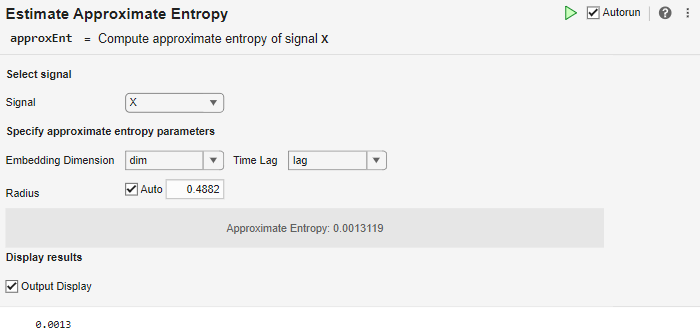Estimate Approximate Entropy
Interactively estimate the approximate entropy of a uniformly sampled signal in the Live Editor
Description
The Estimate Approximate Entropy task lets you interactively estimate the approximate entropy of a uniformly sampled signal. The task automatically generates MATLAB® code for your live script. For more information about Live Editor tasks generally, see Add Interactive Tasks to a Live Script.
Approximate entropy is a regularity statistic that quantifies the unpredictability of fluctuations in a time series. A relatively higher value of approximate entropy reflects the likelihood that similar patterns of observations are not followed by additional similar observations.
Open the Task
To add the Estimate Approximate Entropy task to a live script in the MATLAB Editor:
On the Live Editor tab, select Task > Estimate Approximate Entropy.
In a code block in your script, type a relevant keyword, such as
approximateorapproximate entropy. SelectEstimate Approximate Entropyfrom the suggested command completions.
Examples
Parameters
Version History
Introduced in R2019b





